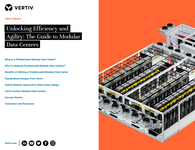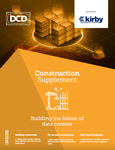We’re a sector under pressure. I think that pressure is enough to be the tipping point for changing how we build data centers, right from the outset. Because if we carry on as we are, doing things the old way, projects will continue to be late, over budget, often of varying quality and lacking in data capture. There will be even more exhausted project teams and fractious internal and external relationships.
How did this happen and why has it come to the surface now? And how can we be the change, to start a new journey of collaboration and move towards relational contracting and trust?
This is an approach with multiple benefits. Let me explain.
Speed is the problem
As a sector, we have always faced a huge challenge of matching supply to demand. Data center construction projects have never really got to grips with how to deal with all the issues that manifest themselves because of the speed required to bring a data center on line to meet client timeframes. We have muddled through, but this isn’t sustainable - especially in the face of a skills shortage, the increased importance of ESG obligations and global inter-dependencies which are susceptible to unforeseen events out of the control of everyone involved. Everyone is looking more closely than ever at the force majeure clauses in their contracts.
The recent global pandemic has exposed the vulnerability of the data center supply chain to the tentacles of global inter-dependencies and the subsequent realization of delivery risk. This could be seen at an immediate site level where labour shortages bit as Covid hit the workforce; where tasks which required close contact could not be undertaken due to safety concerns; where specialist engineers from other countries were unable to attend site to resolve problems or commission kit due to travel restrictions. We have seen lead times for plant, equipment and materials run way into the future, in some cases lead times being double or more of what was the “norm”, and the supply chain in some instances only being able to hold a quoted price for seven days.
Added to all of this is another supply and demand conundrum. While the number of players in the market to develop and operate data centers has increased, the pool of resources available to design, build and operate a data center, including the specialist plant and equipment that requires, remains fairly static.
It’s the perfect storm.
But innovative lawyers have found a way to navigate that storm.
Down with adversarial models
What we know for certain is that in the face of recent and continuing global events, the data center developers and projects with long term partnerships and solid relationships with their supply chain have fared better.
And it all starts in the contracting arrangement. In traditional adversarial contracting models, the risk is usually kicked into the construction phase where there is absolutely no wiggle room to absorb any risk and where parties have no space or flexibility to genuinely collaborate, not least because they have significantly misaligned commercial interests. This will be familiar to so many of you.
Instead, lawyers must work with clients to show them how to move away from this traditional approach towards a more collaborative way of contracting.
In the first instance this may be small changes to current contracts to allow more collaboration to happen – contracting to actively collaborate – for example in relationship level framework agreements. In the long term this may become formalized collaborative contracting arrangements in the form of a full partnering or alliance contract. There are many iterations in the middle to choose from.
We anticipate many of these will soon become more popular in response to the increase in direct procurement of major plant and equipment by data center developers in order to secure lead times, coupled with a lack of availability in the market of experienced main contractors. Could this lead to more projects being undertaken on a construction management basis and how much more collaborative could this model be?
Other sectors, such as oil and gas, have a successful track record in contracting more collaboratively and utilize mutual hold harmless indemnities in their industry standard form contracts (Logic). While the data center sector is a long way from that, we can start to begin the journey to a more collaborative way of working.
We know this will assist in overcoming the “everyday” road bumps of a construction project, the major challenges which will be felt for a long time from the global pandemic and the far-reaching consequences of Russian sanctions and war in Ukraine.
Collaboration is the future
A more collaborative way of contracting will underpin the sustainability of data center construction projects from a people, planet and business perspective and assist in tackling the red flags on any risk manager’s dash board.
In order to meet ESG obligations and report meaningfully on these now critical criteria, an in-depth knowledge of the supply chain is required, alongside a contracting framework which support innovation and problem solving to overcome the serious threat to the environment posed by data center emissions.
Working collaboratively to standardize design and manufacturing can realign commercial interests and facilitate speedier delivery and lower cost.
Combining standardization, in depth knowledge of each other’s businesses and technology could mean that project controls are increasing automated reducing the reliance on people, increasing the accuracy of the information reported and decreasing the possibility of a dispute.
Having a long-term partnership with your supply chain, with meaningful commitments to each other, will provide resilience and the ability to invest in a process of green construction. Most importantly it will develop trust.
More on this to come in a series of Opinion pieces dedicated to Collaborative Contracting.
More in Construction & Site Selection
-

-

-
Discussion Networking break


